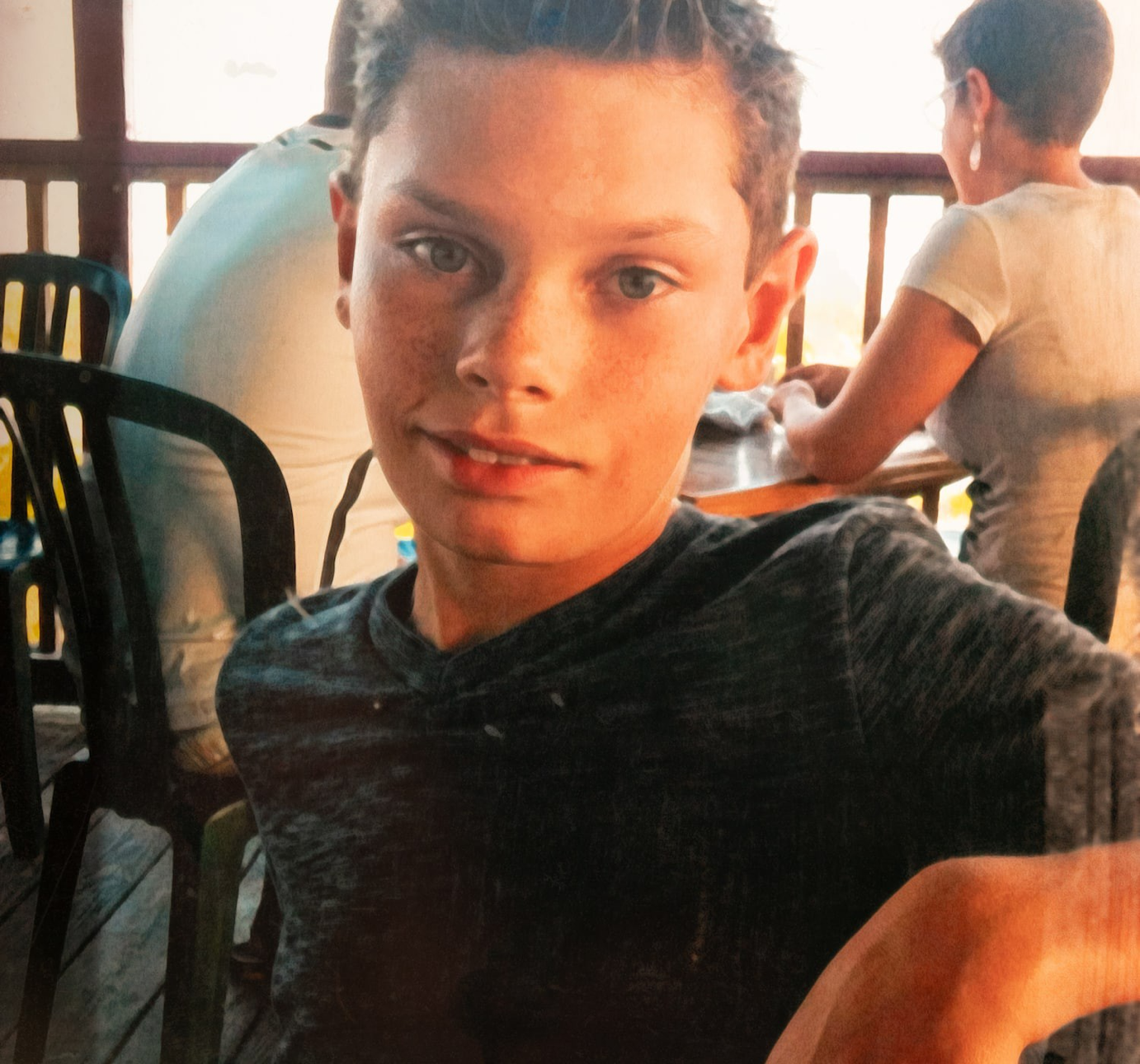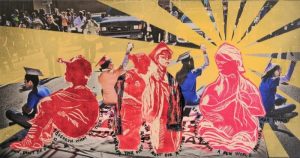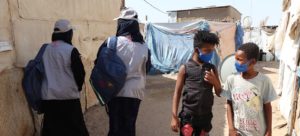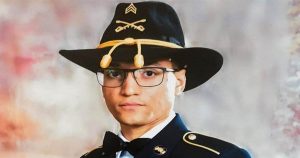This story is adapted from “ Children Under Fire: An American Crisis ,” which will be published March 30 by Ecco, an imprint of HarperCollins. The book examines the devastating effects of gun violence on the nation’s kids and offers a new way forward.
WEST PELZER, S.C. — The boy knew where the key to the gun safe was. He had always known.
It was a balmy evening in summer 2014, just five days after Tyler Paxton celebrated his 11th birthday with chicken nuggets and meatballs. His dad, Jonathan, kept the key atop the safe it opened, never hiding it from his only child because he trusted Tyler. An avid shooter, Jonathan had taught his son how to fire guns and how to handle them safely.
That night, as Tyler’s parents relaxed in front of the TV in the living room, the fifth-grader announced that he wanted to watch cartoons and headed to their bedroom, where he did something else instead. Tyler reached up and took the key, opened the cabinet door and pulled out a .357 magnum revolver with a snub nose. In a safe packed with rifles, it was the only loaded firearm.
Every day in America, children handle guns that they’re not supposed to touch, and every day, they hurt people with them. Kids younger than 2 have killed siblings. Older children have shot friends, parents, neighbors, classmates and, thousands of times, themselves. And yet, after two mass shootings fuel a push for universal background checks and an assault weapons ban in Congress, few of America’s political leaders are championing laws that protect children from accessing deadly weapons.
This is not a partisan issue. A 2019 poll by American Public Media found that 8 in 10 people in this country — including 7 in 10 Republicans — supported legislation mandating that guns be properly locked up when they’re not in use. Such laws are proven to save lives and have never been more essential than they are right now.
Gun sales in the United States exploded during the coronavirus pandemic, a time when kids were confined inside their homes more than ever before. An analysis of publicly reported incidents from Everytown for Gun Safety, an advocacy group, found that the number of people killed by children in unintentional shootings between March and December of 2020 spiked 33 percent, from 97 deaths to 129, compared with the same period in 2019.
Tyler had been around guns all his life, but, to his parents, he seldom seemed interested.
His mere existence was, to the conservative, evangelical Christian couple, something of a miracle. It had taken his mother, Olivia, seven years to conceive, and the pregnancy that followed proved no less fraught. A heavyset woman, she had only one kidney and high blood pressure, and after she carried him for four months, doctors told her that they didn’t believe both mother and baby would survive. A 3-D ultrasound the next day would determine whether the fetus was viable.
Distraught, Olivia and Jonathan drove to Books-A-Million, where he bought her a baby name book. After her husband fell asleep, Olivia stayed up crying and praying. At 5:30 the next morning, she reached for the book, opening it to a page that began with the name “Tyler” and a Bible verse, Matthew 21:22.
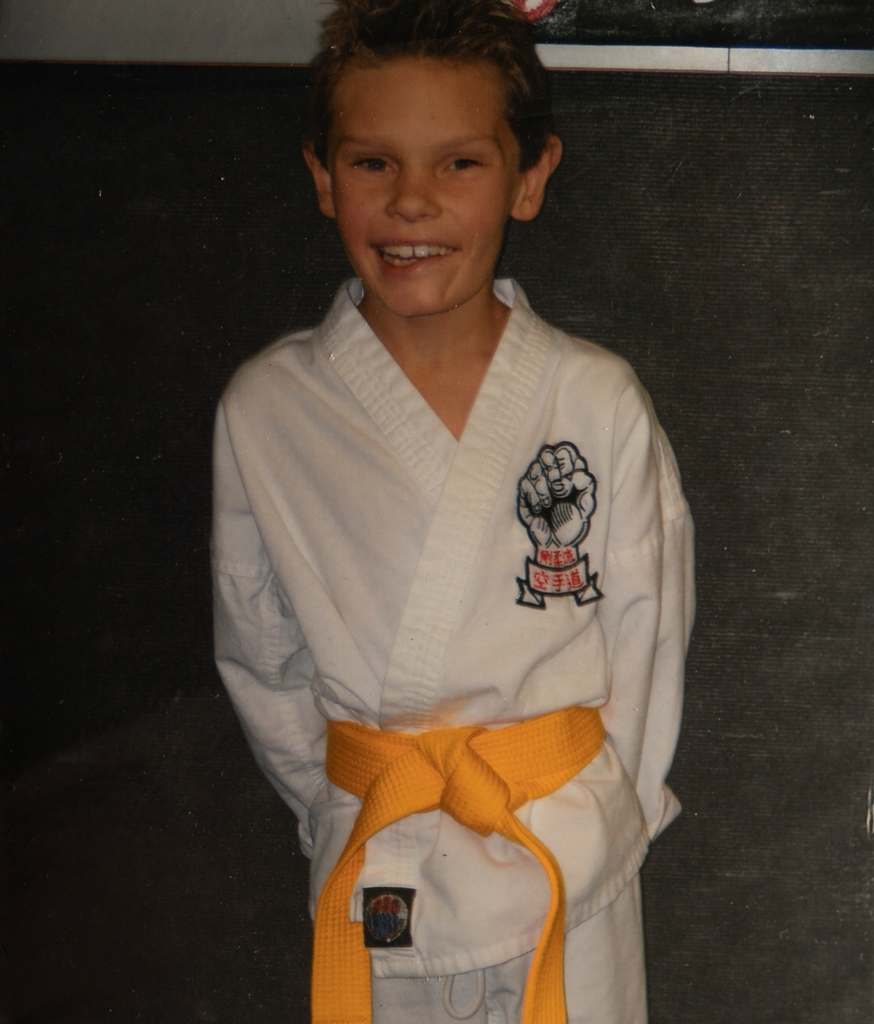
“If you believe,” she read, “you will receive whatever you ask for in prayer.”
At an appointment hours later, the doctors told her their original assessment was wrong. Both she and the baby could survive, and they did. In rural West Pelzer, population 810, her son grew into a thoughtful and intensely curious child. At an age when most of his classmates were picking out storybooks from the library, he brought home encyclopedias. He became particularly interested in dinosaurs, memorizing the taxonomic names of dozens of them, although his favorite wasn’t a fearsome carnivore. It was the Maiasaura, an herbivore whose name meant “good mother reptile.” This dinosaur took care of its children. He liked that.
Tyler was serious about the things he deemed important, and he took nothing more seriously than karate, which he earned a junior black belt in at age 10, and church, which he attended almost every Sunday, even when his mother and father didn’t. Tyler brought his devotion home with him, too, requesting that he and his parents pray together each night before they went to sleep.
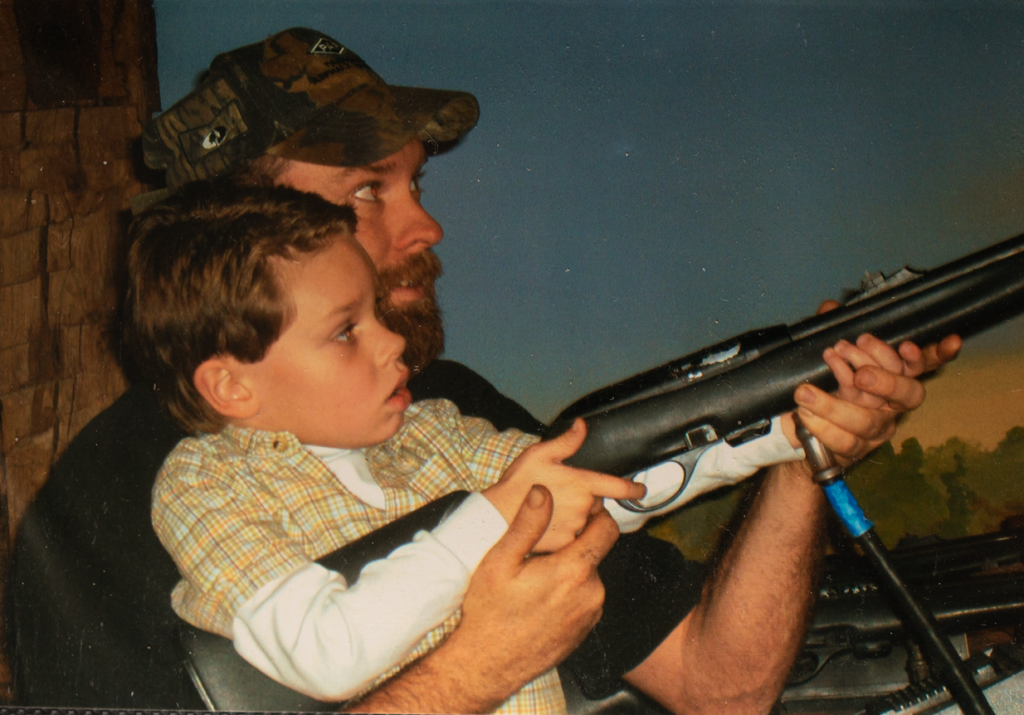
“Dear Lord,” he always began when his turn came, and sometimes it took four or five minutes for him to reach “Amen.”
“An old soul,” relatives often called the boy, who named his beagle Johnny Cash. Still, Tyler was, in many ways, just a kid. He thought SpongeBob SquarePants was hilarious, and he could play Minecraft for hours.
He didn’t get in trouble often, but when he did, his parents confiscated his many electronics, because nothing irritated him more than that. In a letter to Olivia, he once tried to head off any potential punishment. “I love you mom. You are the best Mom ever,” he wrote, signing it “Love Tyler,” before adding, “P.S. I made a 61 on my math test. I’m sorry.”
A lanky kid who inherited his mother’s green eyes and freckled skin, he liked to play with her long, curly brown hair and pretend that it had special powers. At bedtime, he often fell asleep to her rendition of “La La Lu,” from Disney’s “Lady and the Tramp.” As Tyler got older, he asked her not to tell anyone that he still liked it so much.
Tyler adored Olivia, who had been a stay-at-home mom since he was an infant, but the boy most wanted to be like his dad, a bearded, thick-armed Army veteran who worked as an operations manager at an asphalt plant.
Jonathan taught him how to field and throw and hit a baseball, how to hook and clean a bass, and, as he got older, how to fire a gun. Jonathan, a competitive pistol shooter, had been enamored with firearms since childhood, and he wanted Tyler to be, too. He often suspected, though, that his boy acted interested only because he was.
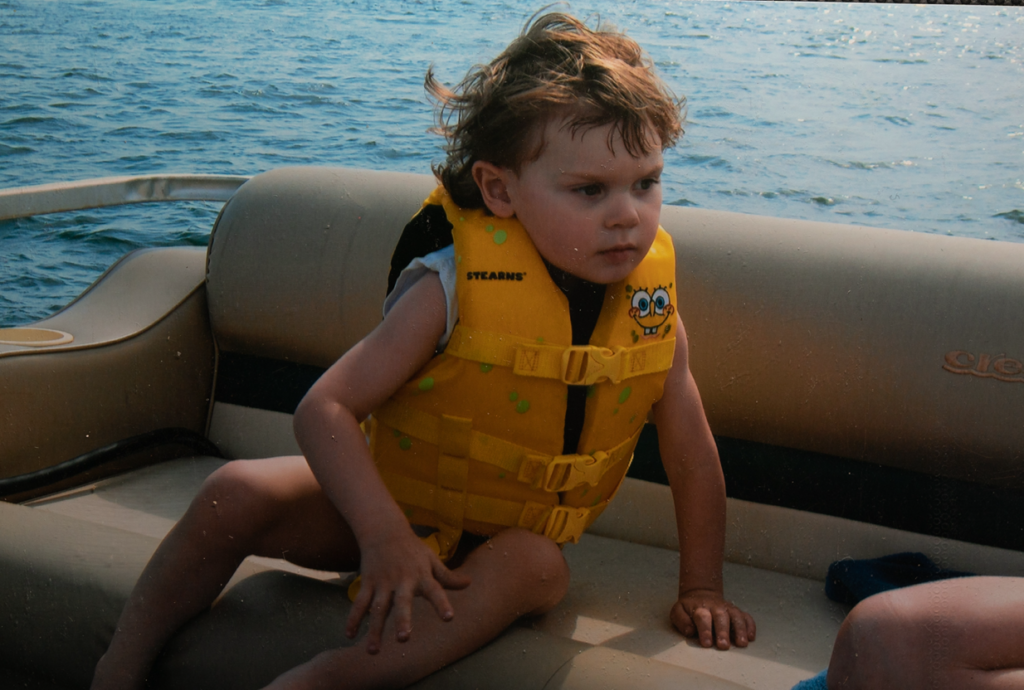
Tyler got bored sitting in the tree stand when they hunted deer, and he went to gun shops with Jonathan just to keep him company. When Tyler was 10, his dad bought him a .22-caliber rifle for Christmas, but the boy cared far more about his new Amazon Fire tablet.
As his 11th birthday approached in 2014, Tyler seemed as content as he’d ever been. He had lots of friends and was excelling at karate. As they did every July, his parents took him to Isle of Palms, on South Carolina’s Atlantic Coast. As usual, they went to Coconut Joe’s, where he ordered fried shrimp and peeled off the breading before he ate them. He played in the ocean, ran on the beach with Johnny Cash, his beagle. He smiled in every photo.
On the Sunday before he opened the safe, Tyler went to church, standing up to share prayer requests for a family friend who was having heart surgery and for his grandmother, whose husband had taken his own life, with a gun, two years earlier.
“She’s still missing my Papa,” he explained.
Then came July 25. The Paxtons picked up dinner from Taco Bell and brought it home, and after Tyler finished his nachos, he went to his parents’ room. Sprawled on the bed in blue-jean shorts and a greenish-yellow tank top, he scrolled through YouTube on his mom’s phone until the battery ran down. He briefly came out to the living room and showed Olivia a funny video of an otter trying to dig a snack out of a tool box, then he plugged her phone into a charger.
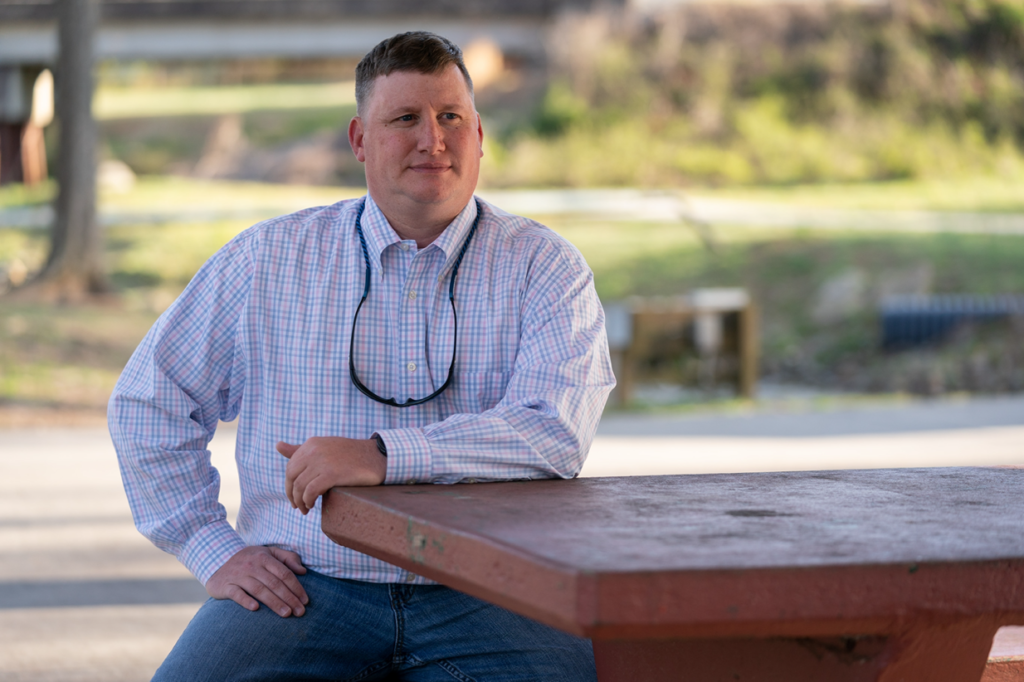
“I’m gonna go watch cartoons,” Tyler said, before he walked back to their bedroom.
Not long after, he reached up to the top of the free-standing gun safe in the corner of the room, got the key, opened the door. Tyler then sat on the floor and faced a mirror, gripping the pistol in his left hand. He raised the barrel to his temple. He pulled the trigger.
To Jonathan, the source of the noise didn’t register right away. He’d heard gunshots thousands of times, but never in his home. Maybe a lightbulb had popped, he thought. Worried that Tyler had shocked himself, his dad rushed down the hall and into the master bedroom. There, he found his son, who was still breathing, and screamed for his wife to call 911.
This was the sort of violence people seldom talked about, or even considered, in communities like theirs, where guns are held dear — where they’re ubiquitous in closets, dresser drawers and unsecured safes. Education, many people argued, was all that mattered, but now a boy educated on every aspect of what to do and what not to do with a gun was being cradled in the arms of his father, the pistol by his side, his blood pooling on the floor.
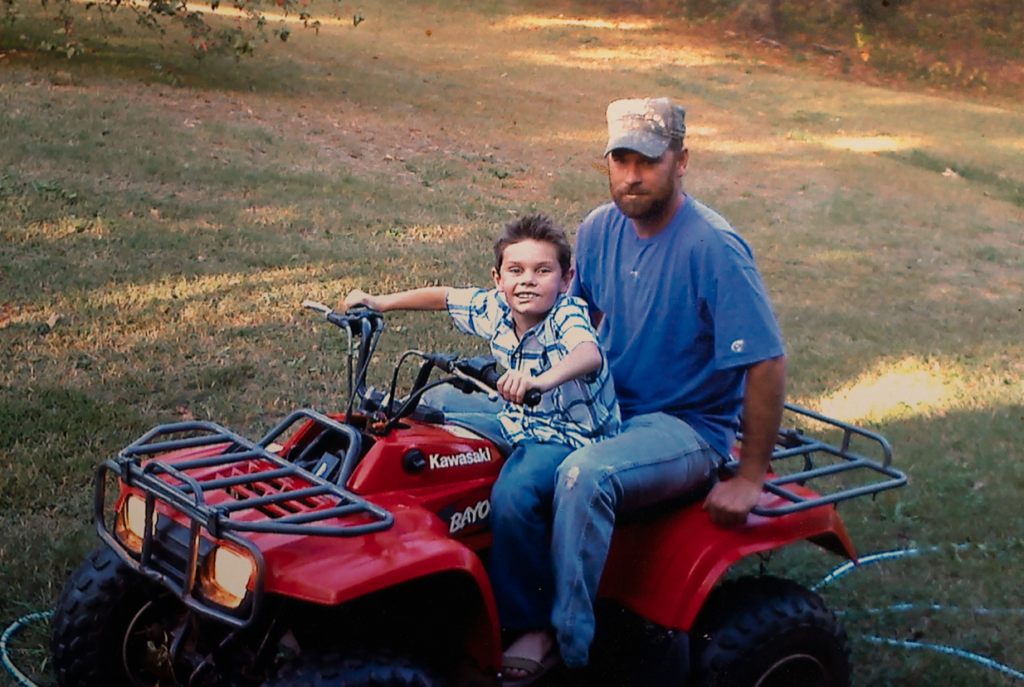
‘Help my son’
Bob Maxwell knew how that night would end the moment he walked into the Paxtons’ bedroom. Then one of only three police officers in all of West Pelzer, he had heard the “shots fired” call less than a minute earlier, and now he was standing over a father telling his boy how much he loved him. The smell of gunpowder still hung in the air.
“Bob, help my son,” his friend pleaded.
“Jonathan,” Maxwell said, “there’s nothing I can do.”
Jonathan had, up to that point, persuaded Olivia to stay out of the room, fearful that what Tyler looked like then would become the final, lasting image she had of her son. Her patience gone, she approached the doorway.
“Do not let my wife come in this room,” Jonathan told Maxwell, and the officer did as he asked.
“Let me in there,” Olivia demanded, but Maxwell wrapped his arms around her and held on, keeping her out until paramedics arrived and rushed past.
Soon, she and her husband were headed to the hospital.
“God, don’t take my son,” Jonathan prayed, but what he didn’t say aloud, to God or to anyone else, was that an overwhelming sense of shame had already begun to take hold. “How’s my wife gonna ever look at me the same?” he wondered, because, to him, this was his fault.
At the hospital, more than 50 people who knew Tyler from church prayed alongside his parents as they waited for an update. Then word came.
“We weren’t able to save him,” the doctor said, and the sound of wailing spread through the room. Jonathan braced for the blame.
“I deserve it,” he thought.
The most popular and interesting stories of the day to keep you in the know. In your inbox, every day.
Police separated the couple, interviewing each of them to ensure that their stories matched and raised no suspicions. With investigators satisfied, the coroner ruled Tyler’s death a suicide, which his parents refused to accept. He had never acted depressed or been the victim of bullying, they said, and in a family that talked openly about feelings, they could not imagine that he wouldn’t have spoken up if something was bothering him.
His parents wondered if he knew the gun was loaded or if he didn’t comprehend the finality of death or if a thought about his grandfather’s suicide had suddenly made him curious. No one could convince them that Tyler understood the consequences of pulling that trigger.
What they didn’t know was that simply owning a gun significantly increased Tyler’s chances of killing himself. In fact, a 2019 study in the [American Journal of Preventive Medicine](https://www.ajpmonline.org/article/S0749-3797(18)32383-3/fulltext) found that the best predictor of a state’s youth suicide rate is the proportion of homes that contain a firearm. Remarkably, one of the study’s authors said, that single piece of data is a “far more accurate” indicator than the percentage of children in the state who have previously attempted suicide.
“There’s this mythical idea that you can teach kids not to want to handle a gun. … You can’t train or educate curiosity out of a little kid, and teenagers are impulsive, and they act without any thought to the future,” said Denise Dowd, a physician and researcher who has treated more than 500 pediatric gunshot victims. “You have to separate the guns from the kids: the thing that does harm from the thing that’s harmed.”
A survey of 153 teenagers and young adults who survived suicide attempts found that a quarter of them tried to kill themselves within five minutes of deciding to. That makes easy access to guns considerably more dangerous than easy access to, say, a rope or a knife or a bottle of pills, all of which are far less deadly. Because of firearms’ extreme lethality, they’re responsible for half the nation’s suicide deaths, and in the past two decades, nearly 10,000 children have used them to end their own lives.
To Olivia, the coroner’s ruling — why it happened and how it happened — didn’t matter much anyway.
“I don’t care what you write on that paper. It’s not going to change anything for me,” she said. “The only thing I know right now is that I’m never going to see my son again. I don’t care about anything else. Nothing else to me matters, except how am I supposed to live now? What do I do now?”
The why and how did matter to Jonathan, though, because he knew he could have prevented it. He’d gotten the revolver for Olivia back in 1997, at a time when he often worked late. She never liked guns, but Jonathan worried about her being alone at night without him, so he’d bought the pistol and kept it loaded, just in case. He hadn’t once considered hiding it from Tyler because he always assumed his son knew better than to handle it.
“It’s just something I never thought about,” he said.
Not long after Tyler’s death, Jonathan’s brother, his hunting partner since they were kids, approached him.
“Don’t get mad at me,” he said, “but can I take your guns out of the house?”
“I’m not gonna hurt myself,” Jonathan said, although as the words left his mouth, he wasn’t certain they were true. So he agreed. At the house, his brother went in without him, because Jonathan still couldn’t bear to step through the front door. Afterward, he acknowledged that he had one more gun, a 9-millimeter pistol, locked in his truck.
“You’re telling me that because you want me to take it,” his brother said.
“It’s there,” Jonathan responded. “Get it.”
Keeping kids safe
So often lost in the debate about guns in America is that the most obvious and urgent step to protect kids from harm would do nothing to infringe on a person’s right to buy or own one. Demanding, by law, that a man with a dozen AR-15s must prevent his deadly weapons from falling into the hands of a child doesn’t mean the man can’t own those weapons, nor does it mean he can’t buy a dozen more. It simply means he must behave responsibly with the ones he has. If everyone in the United States locked up all their firearms today, researchers estimate, the number of gun-related accidental deaths and suicides among children and teenagers would drop by as much as a third.
And yet, a huge number of Americans don’t take that simple step, either because of ignorance, in most cases, or negligence, in some. Researchers who surveyed gun-owning families in the rural South found that a significant proportion of parents had no idea what their children knew about or had done with their firearms, according to a study in JAMA Pediatrics. Nearly 40 percent of parents who claimed that their kids didn’t know where they stored their guns were wrong; the kids said they knew. More than 20 percent of parents who claimed that their kids had never handled one of those guns were also wrong; the kids said they had. Notably, children who had been educated on gun safety were just as likely to say they’d played with the weapons. As of 2015, as many as 4.6 million children lived in homes with at least one loaded, unlocked firearm.
Because Congress effectively banned the Centers for Disease Control and Prevention from researching gun violence for two decades, it has been exceedingly difficult to determine which gun safety measures work best. A comprehensive review of available studies by the Rand Corp., however, found that no policy was backed by stronger evidence than child access prevention laws, the most robust of which allow prosecutors to criminally charge adults who negligently store firearms where children can reach them.
Twenty-one states, including South Carolina, had no child access prevention laws as of March, the Giffords Law Center noted. Of the ones that did, only 17, and the District of Columbia, had passed the most stringent versions. But even those statutes, researchers say, are often not enforced, are too limited or carry weak penalties, rendering them far less effective than they could be.
A Washington Post review of 145 school shootings committed by children in the two decades after the Columbine High massacre in 1999 found that the weapon’s source had been publicly identified in 105 cases. In total, the guns those children used were taken from their own homes or those of relatives or friends 80 percent of the time, but in just four instances did the adult owners of the weapons face any criminal punishment for not having locked them up — and none of those prosecutions stemmed from negligent-storage laws.
“We’re looking at a class of crimes where deterrence might actually work,” said Russ Hauge, a former Washington state prosecutor and Second Amendment supporter who tried, in vain, to imprison a gun owner after a third-grader found the man’s .45-caliber semiautomatic handgun and took it to school, where it went off, leaving a bullet lodged near the spine of an 8-year-old girl. “If there was a clear law that says felony punishment will ensue if you don’t handle your weapons safely, I think we could get some people’s attention.”
Proponents of safe storage gun legislation have compared it to seat belt laws. As recently as 1984, 65 percent of Americans opposed regulations that made seat belts mandatory. But legislators ignored public opinion, and thanks to new laws, education and technology, seat belt use in this country increased from 11 percent in 1981 to nearly 85 percent in 2010. That single device, and the relentless push to make people secure it across their waists, has saved more than 250,000 lives since the 1970s.
It’s difficult to imagine a prosecutor ever going after a father like Jonathan Paxton, but what if the law Hauge described existed when Jonathan bought that revolver for his wife? What if the pistol came with a pamphlet that outlined the statute and the reasons for it? What if he saw government-sponsored ads that explained why his child’s unfettered access to a loaded firearm dramatically increased the boy’s chances of being harmed? What if he had heard one warning, one piece of data, one personal story, that led him to hide the key that opened the safe that held the gun?
‘Mama loves you’
Eight days after their son shot himself at their home, Jonathan and Olivia moved back in, because they had to. It was Tyler’s home, too, the place where their memories of him lived and always would. In every room, around every corner, Jonathan could see his son’s face, spotted with that one freckle just above the left eye that he kissed each day. Night after night, Olivia’s mind replayed the bedtime routine she shared with her son.
“Mama loves you,” she’d say.
“Baby loves you,” he’d say, and back and forth they’d go. On quiet evenings after he was gone, Olivia would recite both parts to herself.
The Paxtons left Tyler’s bedroom just the way he had. They didn’t touch the Winnie-the-Pooh wallpaper border that they’d put up before their son was born and that he’d insisted they not take down. They didn’t remove the martial arts trophy draped in medals, or the school project about polar bears, or the other one about a local farmer who let Tyler pet his goats and sit on his John Deere tractor.
They didn’t remove his assignment from first grade that began with “I am” next to a blank line. “A good boy and a fisherman,” he answered. “I dream”: “about cookies.” “I say”: “I believe in God.” “I understand”: “my Mom is so lovely.” “I wonder”: “what Heaven looks like.” “I worry”: “everyone that gets hurt.”
In their own bedroom, Tyler’s parents kept turning the pages of the calendar that featured a different photo of him for each month. Olivia’s favorites were the ones that showed his beautifully imperfect smile, caused by what she called a “pull,” which had left one side of his bottom lip slightly higher than the other. At the end of each December, they’d start the calendar over.
For the first two years after Tyler’s death, they didn’t travel back to Isle of Palms for his birthday. On the third, they went to another beach, in Florida, where Jonathan woke up one night with such extreme chest pain that he feared his heart was about to stop. They rushed to the emergency room, but the tests showed nothing.
“You’re just having an anxiety attack,” the doctor told him.
The couple didn’t let Tyler’s death destroy their marriage, as Jonathan had worried it might. Instead, they leaned on each other, and on their faith, more than ever before. Jonathan became an ordained minister and began to preach at the church Tyler used to attend without them.
Because they wanted people to remember his life, Olivia and Jonathan talked often of their son’s empathy, his humor, his devotion to God and to his family. As painful as it was, they didn’t shy away from talking about how he’d died, either.
“If it can happen to me, it can happen to anybody,” Jonathan would tell his friends. “You can never be too safe.”
Bob Maxwell, the police officer who first responded to the 911 call, didn’t need to hear that to be convinced. He’d followed the ambulance carrying Tyler to the hospital, and on the way, he phoned his ex-wife and asked her to put their two children on the phone. His daughter was a bit older than Tyler, his son a bit younger.
“I love you,” he told his kids, because he needed them to hear it. He stayed with Tyler’s body that night until the coroner arrived, and afterward, he returned to the Paxtons’ home and helped clean up. In their bedroom, he wiped blood from a pair of Tyler’s baby shoes.
Maxwell had come upon gruesome sights before, but what he saw that night unmoored him. He had nightmares. The smell of gunpowder made him feel nauseated. After the funeral, he sat in his patrol car, holding a radar gun as tears cascaded down his cheeks. Eventually, therapy helped him work through the trauma, but the experience had transformed him in at least one way.
For years, Maxwell had returned home from work and left his gun, strapped to a service belt, on his bedroom floor. He had told his kids many times never to touch it, but he suddenly realized that wasn’t good enough. So, he bought a gun safe, shared the code with no one and locked every weapon he owned inside it.

